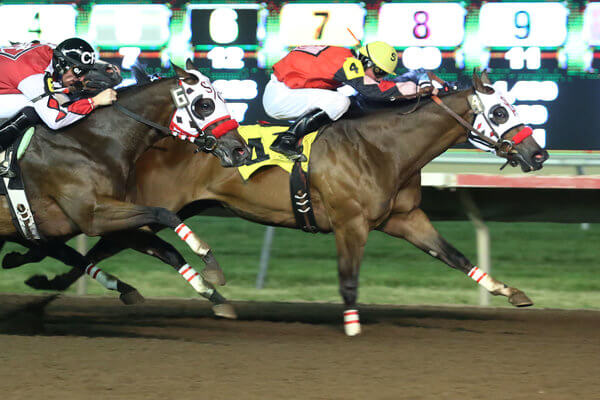 There are many factors which make predicting pace scenarios difficult. One that baffles many novice and expert handicappers is when a horse is stretching out for the first time. A horse may show one type of running style in a sprint, but is not likely to run the same type of race around two turns.
There are many factors which make predicting pace scenarios difficult. One that baffles many novice and expert handicappers is when a horse is stretching out for the first time. A horse may show one type of running style in a sprint, but is not likely to run the same type of race around two turns.
Trying to extrapolate any type of pace or speed figure from a one-turn race to a two-turn race is like comparing apples to oranges. And horses stretching out for the first time just add to the volatility of assessing confidence levels in probable pace scenarios. Yet, if you know what to look for, these horses make for solid spot plays.
I categorize “stretching out” to include horses that are trying two turns for the first time. Horses that ran a one-turn mile over the Aqueduct outer dirt track will qualify as stretching out if their next race is at a mile at Monmouth Park. Likewise, if a horse ran a seven-furlong race at Charles Town and, today, is running a mile at Monmouth Park, they are not stretching out, since they already navigated two turns at Charles Town.
So why does the extra turn matter and what should we look for?
The extra turn is bad for a plodder horse. Plodders are horses that keep the same pace the entire race. They tend to gain slowly and seem to lack acceleration. These horses run steady and don’t have much energy left at the end of the race after having to maneuver through more traffic in the second turn.
Horses that have shown the ability to close or come from off the pace around one turn will have an advantage around the extra turn. These horses have shown the ability to be able to change leads, which they will need to do one additional time. Horses lead with the left leg for balance on the turns and, then, switch to the right leg in the straightaways. If they are unable to switch leads in the stretch, they will often tire after exerting themselves through the turn.
Horses that came from off the pace in a one-turn race will often find softer fractions in a two-turn race. The half-mile times are around two seconds slower, which will allow the horse to run a much more relaxed pace and sometimes even set the pace.
Here is what we are looking for:
- Horse that is stretching out for the first time on the dirt.
- Excuse any previous two-turn race that was over the turf, over an off track, or where the horse had a troubled trip (in these cases, look at the one-turn race two back to see if they qualify).
- The horse must have a winning percentage of 10 percent or better — lifetime, this year and in the races that show in their past performances.
- The horse must have shown a good stalking effort in their last one-turn race, rallying from three lengths or more off the pace at the first of second call to finish in the money.
- If there are two horses that qualify, use the horse that had the better finish position in the qualifying race.

As you can see by the above chart, in general horses in the sample that could come from off the pace were more or less a break even proposition. Once we applied the constraints on the horse’s win percentage, top choice if more than one qualifier, and finished in the money in their previous race the profits improved.
While I normally would require the win percentage to be higher, we have to take the 26.57 percent with a grain of salt. These horses are generally running against established two-turn horses. Through the course of your normal handicapping, you may find another horse that appears to have a pace advantage in such spots. Still, applying these angle rules to horses that are stretching out today can complement your handicapping.
A great example of this angle occurred on July 4, 2016 in the third race at Monmouth Park.

Definitely Tonight was entered in a state-bred allowance race for non-winners of one lifetime at one mile. His effort on June 24, 2016, showed his ability to come from off the pace.

He did, in fact, run off the pace in this race, but did so while facing a second-call time that was a full two seconds slower than what it was in his qualifying sprint race. He was able to race three wide into the lane and draw away from the one-dimensional frontrunner who had set the pace the entire way.



